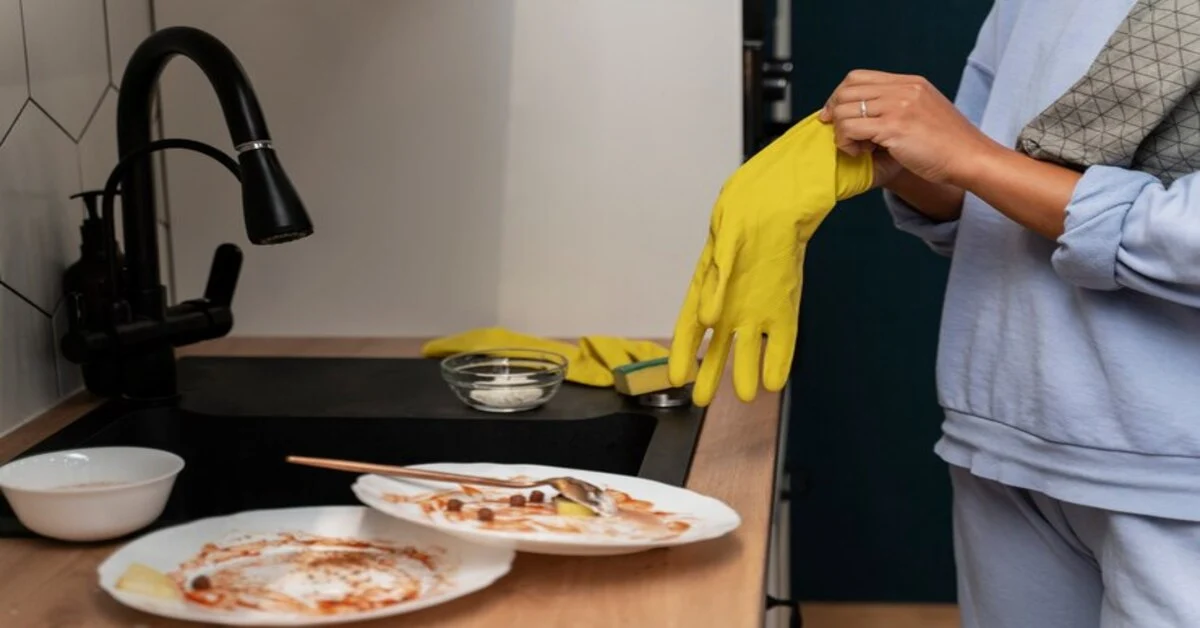Creating culinary masterpieces requires skill and creativity, turning the kitchen into a canvas for your artistry. However, amid the delightful flavors and enticing aromas, a vital element demands attention – kitchen hygiene. Maintaining a pristine and safe kitchen transcends mere aesthetics; it is a fundamental practice essential for
The Importance of Maintaining Cleanliness
Introduction to the 4 C’s of Kitchen Hygiene
Enter the 4 C’s of Kitchen Hygiene – Cleanliness, Cross-Contamination, Cooking, and Chilling. These aren’t just buzzwords; they’re the pillars of maintaining a safe and healthy kitchen environment. Each ‘C’ represents a critical aspect that, when followed diligently, ensures that your kitchen remains a haven for delicious and safe meals.
Let’s delve into each ‘C’ to understand how they play a pivotal role in upholding the standards of kitchen hygiene. From ensuring surfaces are spotless to understanding the significance of proper cooking temperatures, these principles will guide you toward a safer, healthier kitchen journey.
Join us as we explore the intricate details of the 4 C’s, providing you with practical tips and insights to elevate your kitchen hygiene game and, most importantly, keep your loved ones safe and healthy.

Cleanliness: The Cornerstone of Kitchen Hygiene
Table of Contents
Importance of Cleanliness in the Kitchen
A pristine kitchen isn’t just visually appealing; it’s a fundamental requirement for safe food preparation. Maintaining cleanliness in your kitchen is the first line of defense against foodborne illnesses. Every surface, utensil, and equipment can potentially harbor harmful bacteria if not properly sanitized.
Cleaning Surfaces, Utensils, and Equipment
Surfaces
Cleaning surfaces goes beyond a quick wipe-down. Countertops, cutting boards, and appliances should be regularly cleaned with hot, soapy water. Disinfectants or sanitizers can be used to ensure thorough cleanliness, especially after handling raw meat, poultry, or seafood.
Utensils
From knives to pots and pans, all utensils need thorough cleaning after each use. Dish soap and hot water are a must. Non-abrasive sponges or brushes help remove stubborn residues without damaging the surfaces.
Equipment
Kitchen appliances like blenders, mixers, and toasters should be cleaned according to their specific instructions. Removable parts should be washed thoroughly, and the entire appliance should be dried completely to prevent moisture buildup.
Proper Handwashing Techniques
Handwashing is a crucial step often underestimated in kitchen hygiene. Proper hand hygiene can prevent the spread of harmful bacteria from your hands to food.
Steps for Effective Handwashing:
- Wet Hands: Use clean, running water.
- Apply Soap: Rub hands together to lather thoroughly.
- Scrub: Scrub all surfaces, including the backs of your hands, between your fingers, and under your nails, for at least 20 seconds.
- Rinse: Thoroughly rinse off soap under clean, running water.
- Dry: Use a clean towel or air dry your hands.
Maintaining Cleanliness for Safety
Remember, maintaining a clean kitchen isn’t a one-time task but an ongoing practice. Regular cleaning schedules, proper storage of cleaning materials, and immediate cleanup of spills or messes can significantly contribute to a safer kitchen environment.
Cross-Contamination: Safeguarding Your Kitchen
Understanding the Significance of Cross-Contamination
In the realm of the 4 C’s of Kitchen Hygiene, understanding cross-contamination is pivotal. This term refers to the transfer of harmful microorganisms, such as bacteria or viruses, from one surface or food to another. Its significance lies in its potential to cause foodborne illnesses, making it a critical concern for safe cooking practices.
How Cross-Contamination Occurs in the Kitchen
Food Handling
Handling raw meats, poultry, seafood, or eggs and then touching other surfaces or foods without proper handwashing is a common way cross-contamination happens. The bacteria present in these foods can easily transfer to countertops, utensils, or ready-to-eat foods.
Shared Equipment
Using the same cutting board or knife for raw meats and then for vegetables without proper cleaning in between can lead to cross-contamination. Similarly, reusing plates or utensils that have touched raw foods without washing them can pose risks.
Improper Storage
Storing raw meat above ready-to-eat foods in the refrigerator can lead to drips or leaks, allowing juices to contaminate other items. Likewise, not properly sealing or storing foods can also result in cross-contamination.
Preventive Strategies to Mitigate Cross-Contamination
Separation
Keeping raw meats separate from other foods, both during storage and preparation, is a key tenet of the 4 C’s of Kitchen Hygiene. Use separate cutting boards and utensils for raw and ready-to-eat foods. Color-coded boards or utensils can be a helpful visual aid.
Sanitization
Regularly cleaning and sanitizing countertops, cutting boards, utensils, and any surfaces that come into contact with raw foods is essential. Dishwashers or hot, soapy water can effectively sanitize utensils and equipment.
Proper Handling
Washing hands thoroughly after handling raw foods and before touching anything else in the kitchen is a crucial practice within the 4 C’s. Using disposable gloves when extensively handling raw foods can also prevent cross-contamination.
Storage Practices
Storing raw meats in sealed containers or plastic bags on the lowest shelf of the refrigerator to prevent drips onto other foods is a practice aligned with the 4 C’s of Kitchen Hygiene. Keeping ready-to-eat foods covered and away from potential contaminants further reduces risks.
Maintaining a Cross-Contamination-Free Kitchen
By adhering to these preventive measures and being mindful of how cross-contamination occurs, you’ll significantly reduce the risk of foodborne illnesses in your kitchen. Establishing these practices as habits ensures a safer and healthier cooking environment for you and your family, aligning perfectly with the principles of the 4 C’s of Kitchen Hygiene.
Cooking: Temperature, Precision, and Safety
Significance of Proper Cooking Temperatures
Cooking temperatures aren’t just about achieving the right texture or taste; they’re crucial for killing harmful bacteria that might be present in food. The 4 C’s of Kitchen Hygiene emphasize the significance of reaching and maintaining specific temperatures to ensure that food is safe for consumption.
Food Safety Standards
Different types of food require specific internal temperatures to kill bacteria. For instance, poultry should reach an internal temperature of 165°F (73.9°C), while ground meats should be cooked to at least 160°F (71.1°C). Understanding these standards is key to cooking safely.
Importance of Using Food Thermometers
Accurate Measurement
A food thermometer is your best ally in the kitchen. It provides precise readings and ensures that food reaches the recommended temperatures, leaving no room for guesswork. Incorporating a reliable food thermometer into your cooking routine aligns perfectly with the principles of the 4 C’s of Kitchen Hygiene.
Versatility
From roasts and steaks to casseroles and soups, a food thermometer can be used across various dishes to guarantee they are thoroughly cooked. It’s a small tool that makes a monumental difference in ensuring food safety.
Safe Cooking Practices to Avoid Foodborne Illnesses
Avoid Undercooking
Undercooked food can harbor harmful bacteria, leading to foodborne illnesses. Following recommended cooking times and temperatures outlined for different types of food is pivotal to prevent this.
Proper Handling After Cooking
Once food reaches the recommended temperature, it’s crucial to handle it properly. For example, keeping cooked food above 140°F (60°C) or refrigerating it promptly helps prevent bacterial growth.
Avoid Cross-Contamination During Cooking
During the cooking process, ensure that cooked foods are kept separate from raw foods. Use different utensils and plates for raw and cooked items to prevent cross-contamination.
Maintaining Safe Cooking Practices
By prioritizing the use of food thermometers, understanding and adhering to proper cooking temperatures, and following safe cooking practices, you align with the 4 C’s of Kitchen Hygiene. This approach not only guarantees delicious meals but, most importantly, ensures the safety of those who savor your culinary creations.
Chilling: Preserving Freshness, Preventing Spoilage
Importance of Proper Food Storage and Refrigeration
Preserving Freshness
In the realm of the 4 C’s of Kitchen Hygiene, proper food storage and refrigeration play a critical role. Refrigeration slows down the growth of bacteria, preserving the freshness of perishable foods and extending their shelf life.
Preventing Spoilage
Foods that aren’t stored at proper temperatures can quickly spoil, leading to food waste and potential health hazards. By adhering to recommended storage practices, you align with the core principles of kitchen hygiene.
Safe Temperatures for Refrigeration and Freezing
Refrigeration Temperatures
Maintaining a refrigerator temperature below 40°F (4°C) is crucial for preventing bacterial growth in perishable foods like dairy, meat, and leftovers. It’s a cornerstone of the 4 C’s of Kitchen Hygiene, ensuring food safety and quality.
Freezing Guidelines
For long-term storage, freezing at 0°F (-18°C) or lower is recommended. Freezing halts bacterial growth, preserving the quality of foods like meats, fruits, and vegetables for an extended period.
Strategies to Maintain Food Freshness and Prevent Spoilage
Proper Storage Containers
Using airtight containers or resealable bags helps maintain freshness and prevents contamination. Sturdy containers also prevent odors from spreading among foods.
Organized Refrigeration
Arrange your refrigerator strategically, placing raw meats on lower shelves to prevent drips onto other foods—store ready-to-eat foods in covered containers to avoid cross-contamination.
Utilizing Freezer Bags and Labels
Packaging foods in freezer-safe bags and labeling them with dates ensures you use items before they lose quality. This practice not only aligns with the 4 C’s but also reduces food waste.
Maintaining Food Freshness for Safety
By understanding the importance of proper food storage, adhering to safe refrigeration and freezing temperatures, and implementing strategies to maintain food freshness, you uphold the principles of the 4 C’s of Kitchen Hygiene. These practices not only ensure food safety but also contribute to a more sustainable and efficient kitchen.

Conclusion: Safeguarding Your Kitchen, Nourishing Health
Embracing the Principles of the 4 C’s of Kitchen Hygiene
As we culminate our exploration into the 4 C’s—Cleanliness, Cross-Contamination, Cooking, and Chilling—we recognize their collective significance in fostering a safe and healthy kitchen environment.
A Commitment to Cleanliness
Maintaining cleanliness isn’t merely a surface-level endeavor; it’s a fundamental aspect of food safety. Regular cleaning routines, proper sanitation, and effective handwashing practices set the groundwork for a hygienic kitchen.
Understanding Cross-Contamination
By comprehending how cross-contamination occurs and implementing preventive measures, we minimize the risks of harmful bacteria transferring between foods and surfaces, ensuring safer cooking practices.
Cooking with Precision and Safety
Adhering to recommended cooking temperatures, employing food thermometers, and following safe cooking practices not only guarantee delicious meals but also guarantee the elimination of harmful pathogens.
Chilling for Freshness and Longevity
Proper food storage, refrigeration at safe temperatures, and smart strategies to maintain food freshness contribute to both food safety and the reduction of food waste.
The Ongoing Journey of Kitchen Hygiene
Bear in mind, that maintaining the 4 C’s of Kitchen Hygiene is vital for keeping your kitchen clean and safe. These principles form a constant path toward safeguarding the health and wellness of everyone who savors your cooking. By integrating these methods into your daily regimen, you cultivate a kitchen that prioritizes well-being and sustenance.
Let’s Cook Safely and Deliciously Together
As we conclude, let’s continue our commitment to the 4 C’s of Kitchen Hygiene. By embracing these principles, we not only prioritize health but also foster a deeper appreciation for the art of cooking—a journey marked by safety, precision, and delectable flavors.

